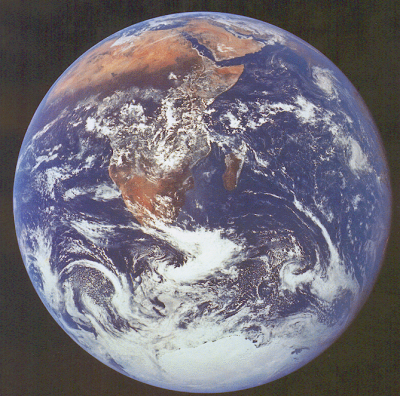Cornell Food Systems Global Summit
Strategies to feed 9 billion people in 2050

By 2050, the world’s population is predicted to reach 9 billion people – that is 2 billion more people than now who will need to eat. In order to feed everyone, industry will need to double crop production. Such an increase in food production may not be possible unless there are dramatic changes in how food is produced, shipped, stored and consumed, many people argue.
But experts gathered at the Cornell Food Systems Global Summit in Ithaca, NY, Dec. 8 say feeding everyone is possible as long as the different sectors of the food industry and consumers work together to apply necessary changes, such as using existing technology to use water more efficiently, addressing the threat of climate change by adjusting farming strategies, making produce more appealing, increasing the availability of animal-sourced foods and consuming them responsibly and improving access to packaged foods that allow more people to work and earn incomes.
Reducing water waste
A big constraint on food production is limited water, but simple changes to how crops are grown using existing technology could significantly reduce water waste and improve sustainability, said Prabhu Pingali, a professor at Cornell University’s Division of Nutritional Sciences.
“The waste of water is high across the world and it is highest in countries most intensely populated and cultivated,” he said. Water waste is high in part because it is virtually free for most farmers and there is no effective mechanism to discourage overuse, such as charging high-users more.
If an incentive for reducing water was enacted, farmers more likely would turn to existing technology, such as sprinklers, drip systems and canal designs, to lower water consumption, he said.
Reducing water also might help stem climate change, which “is a big unknown on how it will impact our ability to feed the population,” Pingali said.
Breeding better tasting food
Improving the diversity of flavor and aroma of fruits and vegetables so that more people want to eat them instead of less sustainable foods also could help industry meet the growing population’s food demands, said Michael Mazourek, an assistant professor at Cornell University’s School of Integrative Plant Science, Plant Breeding and Genetics Section & Horticulture Section.
He explained with the development of global food chains, industry has broken the “evolutionary indications” of when food is sweetest and most nutritious because ripe fruits and vegetables are more difficult to transport. Produce often is picked and shipped before its prime, “so we are disappointed in the flavor and we lose some quality of nutrition.”
But by breeding more heirloom and regional varieties of fruits and vegetables, industry can recapture flavor and nutrition, he said. This will necessity shorter supply chains and require people to eat locally though because these will not ship and store as well.
In addition to breeding more flavor into plants, improving the quality of the soil in which they are grown also could enhance flavors, Mazourek said.
“A lot of science right now is looking at soils and how they affect the flavor of plants,” which in turn could affect how and when fertilizer is used and the sustainability of farming, he said.
While different plants respond differently to soil changes, many taste better when grown in compost rich soil instead of heavily fertilized soil. For instance, mustard tastes sweeter when grown in compost and more peppery when grown in fertilized soil.
Mazourek also noted breeders to need reach out to consumers directly so that they can taste the new variety of produce and increase pressure on growers to select these cultivars. Otherwise, farms do not have an incentive to plant new crops, he said.
Improve access to animal-sourced foods
While convincing people to eat more fruits and vegetables is part of the answer to feeding 9 billion people, the extreme of asking everyone to become vegan or vegetarian is not, said Dennis Miller, a professor at Cornell University’s Department of Food Science.
He explained, feeding the world is not just about meeting caloric needs per person, but ensuring those calories come from a balanced diet that delivers necessary nutrients. In some cases, animal-sourced foods can offer a healthy alternative to less nutrient-dense, high caloric choices so that a healthier diet can be attained with fewer calories.
“There is a lot of work coming out of places like Africa with children now that shows when you increase animal sourced foods in poor families, those kids are healthier, they grow faster and have fewer diseases,” Miller said.
But, he added, “all things should be in moderation and we shouldn’t overdo” eating meat, which is currently a problem in developed countries and a risk in countries where prosperity is increasing dramatically, such as in China. The United Nations Food and Agricultural Organization predicts a 60% increase in demand for animal products by 2050, in part because as more people can afford meat, more people will consume too much meat.
Shifting the type of meat consumed from grain fed beef to grass fed beef or chicken or pork also would improve the sustainability of meat production, according to media reports, which note that under the current system for raising meat only a fraction of the calories fed to animals is transferred to the meat and milk people consume.
Improve economic opportunities to improve access
As the unequal distribution of meat consumption shows, improving the supply balance of food to create a diverse diet for healthy nutrition is key to properly feeding the population, Pingali said. But making more food available is not helpful if the people who need it still cannot afford to buy it.
Pingali noted that in India poverty hinders many people’s ability to access sufficient foods from diverse sources, even though it is available.
“We need to look at the chronic poor to see how they can improve their own access to food. What are the opportunities for growth, employment and what ways can they improve their assets,” Pingali said.
One way to help improve people’s financial situation and access to food at the same time is to make healthy packaged foods more readily available, Pingali said. He explained that processed foods are growing “enormously in developing countries,” as a time saving tool that allows more people to work and contribute income to their families. But in order to be sustainable and healthy, the packaged foods should concentrate on dietary staples such as flour and pasta rather than on high-fat desserts and snacks, he said.
“Once we get into snack foods, that is where you see the issue of health effects of obesity issues. … So we need to figure out ways to get more healthy snacks and more traditional foods into packaging and at price points that are in favor of the consumer,” Pingali added.








